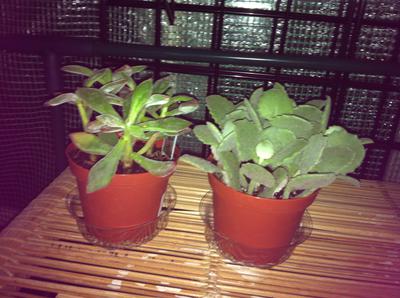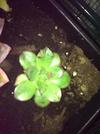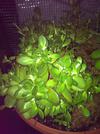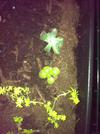
by Brie
(Regina, Sk)





First two are fuzzy. Next I hope it’s a kiwi. Third it’s huge but fragile. Last are 3 different cuttings but the top one is a blueish grey.
I’m addicted an want to know how to propagate all of these.
Thanks
Brie
Wow, Brie, that’s quite an assortment; most of these are fairly common as cuttings or little plants, which generally means they’re easy to grow and have success with.
Starting at the top; Picture 1; this looks like Echeveria setosa or one of it’s hybrids, and the scalloped edge one is a Kalanchoe species of some kind – possibly Lavender Scallops, as you say it’s fuzzy.
2 is an Aeonium of some kind, until it grows a little more, it’s impossible to pin it down much more than that.
3 could be a Crassula, possibly a crested form of C. ovata, which is the Jade Plant.
4 looks like a mixed bag; blue Echeveria species, then another Kalanchoe species, and some kind of Sedum.
One thing to watch is the type of soil you’re potting them into – this looks like some kind of bark based potting soil, which is meant for jungle type plants like ferns and philodendrons.
Succulents might survive for a while in this, but they tend to be prone to root rot and other problems because it just doesn’t drain well enough.
Spring for a bag of cactus soil, or mix your own from sterilized potting soil, half and half with perlite, pumice or small gravel.
Hope that helps,
Jacki
See the page on succulent care for more on how to grow them successfully.

